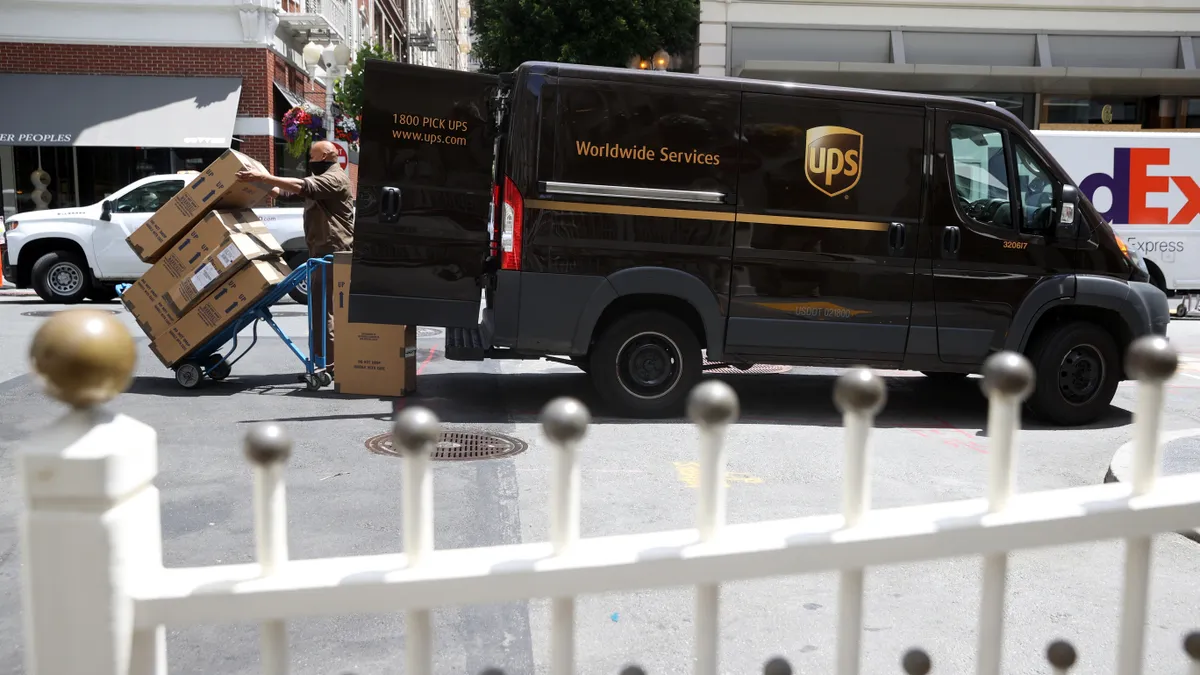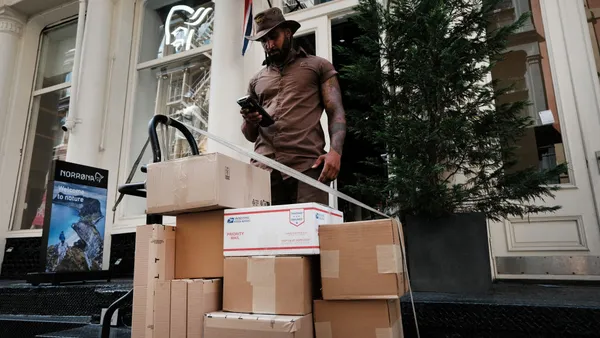Dive Brief:
- Congestion at ports in Los Angeles and Long Beach is currently slowing the flow of volume into UPS' U.S. network, CEO Carol Tomé said on the company's Q3 earnings call.
- The company's nearby hubs receive containers from these ports through a dropshipping arrangement with a third party. One of those hubs has the capacity to handle 70 containers, but it's "only getting about 50 of those containers," Tomé said.
- "So it is slowing down the flow of our packages," Tomé said of port congestion. "Now, as soon as we get it, we get it delivered. So our business is doing well. But in terms of the end-to-end supply chain, it's jammed upstream."
Dive Insight:
Tomé outlined several initiatives the company is deploying to keep service levels high during the upcoming peak season, but package volume has to enter the network first. Port congestion, among other global supply chain hurdles, is making that process take longer for many of UPS' customers.
UPS is seeing some customers rely more on its air cargo services to speed up the shipping process amid difficulties in securing parts on time, Bill Seward, UPS president of worldwide sales and solutions, said in an interview. Average daily package volume for the company's next day air services in Q3 was up about 2% YoY.
"We are seeing customers upgrade, and that's been consistent throughout the pandemic," Seward said. "Our air volumes, particularly our premium air products, have been trending up throughout the pandemic."
Overall U.S. package volumes in Q3 were down 2.7% YoY after last year's pandemic-fueled surge in demand. But UPS still projects a "robust" peak season in Q4, Tomé said, with the company leveraging technology to speed up package processing and better plan for the flow of packages.
UPS' technology allows it to match daily capacity with customer demand, so the company can more effectively control the amount of volume that enters its network. Tomé said this will help the company "minimize chaos costs" and keep service levels high. Additionally, UPS employees who load its package cars for delivery will use a wearable device that will eliminate 20 million manual scans daily, Tomé said, just one of the technology-driven initiatives the company is implementing.
"When you think about the cool technology that we're going to introduce into our buildings — automated label application, automated bagging, robotic induction into the package cars — there's just a ton of opportunity here to drive automation in ways that we haven't done before," Tomé said.
UPS and FedEx are both investing in automation to improve their service levels for shippers. But shipping through the two carriers has become more expensive, particularly for large businesses, as they deal with a surge in demand.
Next year, UPS will implement a 5.9% general rate increase for the U.S., Tomé said. Full details of the increase will be published later this week. This follows FedEx's 5.9% rate increase, which shipping intelligence platform Reveel said was the highest average rate increase since 2013 for the UPS rival.














